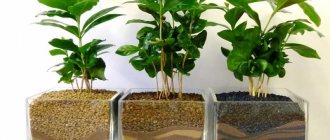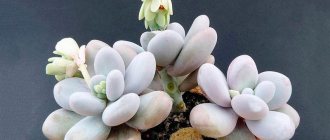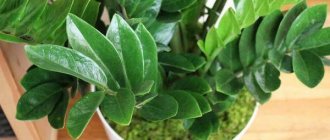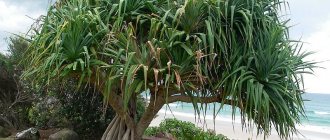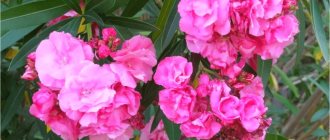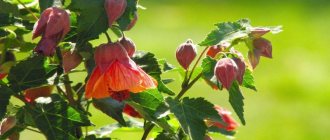It's no secret that coffee has an excellent stimulating effect. Just a few cups of this wonderful invigorating drink can relieve the feeling of fatigue and activate brain processes. The grains contain caffeine, fiber, various minerals and nitrogenous compounds, which well tone the central nervous system of our body.
The fruits of the plant have long been used in traditional medicine for medicinal purposes. Pharmacies now sell coffee charcoal, a drug that doctors recommend for poisoning to neutralize toxins in the gastrointestinal tract.
Many people have seen how coffee blooms in the photo. Probably every gardener, both beginner and experienced, dreams of a coffee tree as a house plant. There is an opinion that its cultivation requires a special, professional approach. In reality, the process is no more complicated than caring for common indoor plants. Using our tips, you can competently and without any problems grow an Arabica coffee flower on your own windowsill.
Beneficial properties of coffee beans
The homeland of the tree that produces useful fruits is the tropical region of Ethiopia. But experts have learned to grow a coffee tree with their own hands and recommend everyone who wants to start growing this tropical plant.
Many nature lovers have long been growing coffee trees at home and enjoying its magical fruits.
The perennial crop gives an annual growth of 5-10 centimeters. The coffee tree lives and bears fruit well for a very long time. Even at 100 years of age it can produce a good harvest.
Caffeine
The coffee tree and its seeds contain caffeine, an active substance that has a stimulating effect on the cardiovascular system and central nervous system. For drug or alcohol poisoning, coffee is also used.
In addition, coffee copes well with low blood pressure, headaches, “like a hand” it relieves tension, stress, fatigue, relieves depression, bad mood, adds energy, increasing performance. It is also useful because it improves brain function and blood circulation.
Caffeine is found in many medications. Caffeine charcoal is obtained from the fruit, which contains vitamins and microelements. It is used for bloating, increased gas formation and poisoning. An infusion of raw grains helps with arthritis and also reduces the level of uric acid in the body.
Medicinal properties of coffee
Drinking coffee improves the performance of the heart and respiratory organs, but you should not abuse coffee, especially for people with heart disease.
You can drink a little in case of asthenia, severe fatigue, sleepiness, fatigue, to activate mental activity.
A simple recipe will relieve headaches: raw tree grains, 1 tbsp. spoon, pour a glass of boiling water, wrap. In an hour the infusion will be ready. Drink the infusion three times a day after meals, 1/3 cup.
Esoteric properties of the coffee tree
In addition, the “green pet” has rare esoteric abilities that can influence people’s lives, bring prosperity to the family, absorb negativity in the house, extinguish aggression, and smooth out conflicts.
If a tropical exotic grows in the house, then generations of different ages begin to respect and understand each other better, and old feelings return to the spouses.
In addition to protecting the family from conflicts, exotics attract wealth to the home, promote business development and improvement in the profession, help build a career and awaken the talent of a financier.
The importance of wood for improving mood is great. The plant radiates so much positivity that people stop noticing only the bad in life, begin to feel confident, and become determined to overcome gloomy circumstances.
The magic of coffee
It is difficult to say about the time when coffee was shrouded in mysticism and secrets. There are simply too many legends to count. By the way, there is still no consensus regarding the history of the drink. Let's consider several versions:
- This drink was first discovered in East African Ethiopia. One day, shepherd Kaldim noticed that animals were greedily eating the fruits of an unknown plant and becoming more active. Surprised by this, he went to the monastery and told the abbot about what he saw, who became interested in the plant. The priest collected leaves and fruits, prepared a drink and drank it. Convinced of its magical properties, the abbot began to regularly give it to his monks.
- Muslim theory. Arabs believe that coffee is a gift from Allah, who at one time saved the Prophet Muhammad from a serious illness. And today Muslims believe that coffee, when consumed in moderation, is beneficial: it relieves thirst, simplifies the fight against infections and gives a person wisdom.
It's difficult to say which theory is true. One thing is known: people have long known about the miraculous properties of coffee and actively used them. Coffee leaves and beans were added to various potions and elixirs; they served as attributes of magical rituals, and the drink prepared from them was used for divination.
Modern medicine does not argue with this statement. Coffee has a positive effect on concentration, mood, and performance.
Regular consumption of this noble drink reduces the risk of developing cancer, asthma, Parkinson's disease and gastrointestinal pathologies. Coffee also reduces the negative effects of smoking on the body, increases endurance and improves blood supply to organs. Read more in the article “The benefits and harms of coffee.”
But it is possible to talk about all these positive effects only in the case of moderate “pampering”. It is believed that you can drink no more than 2 medium cups of natural coffee per day, and if you regularly exceed this norm, you can significantly undermine your health. Constant abuse of coffee is the cause of problems with the nervous system, aggressiveness, irritability and anxiety.
Features of growing at home (briefly)
Where is the birthplace of the coffee tree today? It is grown in 70 countries around the world, for example, in Brazil, Indonesia, on the island of Java, as well as in all countries with a tropical climate. Today, many gardeners grow this wonderful tree in their greenhouse.
There is an opinion that this is a very demanding and capricious culture. But that's not true. Coffee trees are not so sissy if you follow the rules of care:
- Like all tropical crops, coffee loves warmth - in summer - 22-30ºC, and in cold weather - 13-15ºC. Humidity - 65-70%.
- Watering with water, which should stand for a couple of days. In the summer, every 2 days, in the winter - when the soil in the flowerpot is completely dry.
- Fertilize with organic matter twice a month.
- Loves light, can be placed on northern and western window sills.
- Replant once every three years in slightly acidic soil. It can be propagated vegetatively or by grains.
- The coffee tree should be removed from drafts, not filled with water, and placed further away from fiery heating radiators in winter.
But the main feature of growing coffee is that the tree does not like to be often turned first one way or the other, that is, there is no need to turn the flowerpot in different directions. Let it stand as it was placed, otherwise it will shed its blooming attire. To make the crown seem lush, you can install a mirror next to it.
Peach tree: a symbol of immortality according to Feng Shui
What kind of tree is red oak?
What can a peach tree bring to your home according to Feng Shui? According to Chinese beliefs and legends, the peach is a symbol of long life and good health, because the fruits of this particular tree are part of the elixir of immortality. Therefore, if someone gives you such a tree as a gift, then be sure that this person wishes only the best for you.
Other tree features
Besides the symbolic meaning of the peach fruit, its other parts are also often used, as is the tree itself. Let's take a closer look.
Wood has the ability to repel demons and evil spirits, so it is hung in different parts of the house to protect it. Peach flowers have a special power that helps women attract and charm men. This tree is a symbol of a strong and happy marriage, so it is often presented as a gift to newlyweds or they themselves purchase it for a new home. Peach promotes the conception of children. It often happens that couples who cannot have children for a long time buy a peach
After some time, a baby comes to their house. In this case, it is important to pay attention to the tree, put photographs of the children next to it, and lovingly care for it. If you plant or place a peach tree in the center of your home, you will thereby attract prosperity to your home.
Feng Shui tree symbols in the interior
Of course, not everyone has the opportunity to purchase and place a whole tree (even a small one) in their home. In this case, you can buy a figurine of a peach or a painting with its image. All this will also allow you to establish a happy family life and improve your health.
Details on caring for your coffee tree at home
From the beginning of April, the coffee culture begins to develop and bloom, continuing to be active until October. But the color of a coffee tree cannot be seen immediately, but only with proper care in the 3rd or 4th year of its life.
During flowering, white flowers appear on the tree, in which the inflorescences are collected in a bouquet of 4-6 pieces. They grow from the axils of leaves and have a pleasant aroma similar to jasmine.
Let's take a closer look at the stages of care to see all the splendor of the coffee tree.
Temperature
If we grow coffee trees at home, we must set the desired temperature. For good growth and development of coffee culture, the best temperature is 23 degrees. If it is hotter in the greenhouse, then with increased air humidity, the seedlings will also be comfortable.
In the winter cold they are entitled to rest. To do this, the temperature must be reduced to 12-15 degrees.
Spraying
If the summer is rainless and the room becomes too dry, then the coffee tree will not refuse daily spraying with warm water. In winter, spraying should be stopped. But if the tree is close to heating radiators, then life-giving spraying should be continued.
To protect seedlings from attack by pests, once a month you can apply a leaf-to-leaf treatment with an infusion of ash.
Lighting
How to grow a coffee tree at home, where to place the flowerpot? The tree does not particularly need the hot rays of the sun to burn it. He will be comfortable near windows or on north or west windows.
If the plant does not bloom for a long time, you will have to create additional lighting or move it from the shadows to a well-lit window.
Watering
You should not overwater the plant, even though it is a guest from the tropics. This tropical crop does not tolerate waterlogging, and especially stagnation of liquid in the pan. There is also no need to allow the soil to dry out.
Before watering, check the dampness of the soil at a depth of 2-3 cm. To do this, lower a wooden shovel into the soil, and you can check with your finger. If the soil is damp, water it after a couple of days, also checking the moisture content of the substrate.
Particularly urgent watering will be required when the leaves of the coffee tree lose their elasticity and droop. The condition of the foliage is an excellent signal for watering.
Pot
Coffee trees are usually sold in small flower pots. When replanting, do not try to take a pot much larger than the store-bought one. Look at its root system and choose a pot 3-4 cm larger than the old one.
In large flowerpots, the soil will begin to sour, which will lead to the death of the coffee tree.
Priming
The soil for a coffee tree should be slightly acidic, clayey with a lot of organic matter. This substrate is sold in flower shops. Suitable soil for gardenias or azaleas.
Not all lovers of exotic guests buy ready-made soil, because they only trust soil prepared with their own hands.
Soil for a coffee tree: take 1 part each of garden soil, humus, peat soil and river sand. Before planting, the soil must be disinfected by sprinkling it with a manganese solution.
Pebbles, expanded clay, broken bricks washed to clean water are suitable for the drainage layer. A layer of activated carbon must be placed on the drainage layer to prevent rotting of the roots.
Feeding and fertilizer
In order for a coffee tree to delight with lush greenery, it needs specific nutrition. How to choose fertilizer for a coffee tree? When should I add them?
How to fertilize:
- From March to May, they are fed with nitrogen fertilizers;
- In summer in June - mineral fertilizers and organic matter are applied once each;
- In July and August, once every 2 weeks, the coffee tree is fertilized with potassium phosphate, excluding all organic matter;
- In autumn in September, spray with a solution of potassium salts.
Once a month, the substrate is acidified with a solution of citric acid - 1 g per liter of water.
Replanting a coffee tree
How to grow coffee to see the tree in bloom? It cannot be kept for a long time in a small container and an old substrate without nutrients. It needs a mandatory transplant for flowering and ripening of berries.
First, the soil for the coffee tree and a container for replanting are prepared, and then a drainage layer of 2-3 centimeters is poured into it.
The coffee tree is replanted every 3 years, maybe every 4 years if it feels good.
Transplant process:
- Remove the coffee tree from the old pot and inspect the roots.
- Cut off rotten and dry shoots, sprinkle with charcoal powder, and let dry for 2 hours.
- Immerse a healthy root system into the soil so that the root collar is raised 5-7 cm above the ground.
- Fill the volume of the pot around the roots with new substrate. The soil for the coffee tree must have good air permeability, this is important.
- Pour over warm, settled water.
- After 2-3 days, lightly loosen the top layer of the substrate.
Trimming
To prevent the indoor coffee tree from growing too much, it must be pruned. If a florist wants to get a standard tree, then there is no need to do pruning. It has been noticed that after such manipulation the trunk stops its growth.
The coffee tree begins to thicken, reaching a height of 60-80 cm. In this case, the standard look is obtained without much effort. The coffee plant is often grown as a bush, cutting off excess shoots from the crown.
In the first year, the shoot of the plant grows upward and does not branch, so there is no need to pinch it. Coffee branches begin to grow in the second year.
If you want to get a standard with a dense crown, then at the end of February or beginning of March, the constriction is done:
- The trunk, which has grown to 25–30 cm, is tied with wire at a height of 15–20 cm, just below the nodes.
- The top bud is cut off, and the trunk is trimmed, leaving 2 internodes above the wire.
- Then all the branches growing upward above the wire are cut off.
- The remaining branches are trimmed so that the tree takes on a beautiful appearance.
- After 3-4 years the constriction is made weaker, and after a month it is removed. As a result, a short tree remains, about 60 cm, and the crown diameter is 1.5 meters.
Bloom
The coffee tree blooms no less fascinatingly than Japanese sakura. During the flowering period of this culture, many lovers get married to catch the magical beauty.
How does this exotic bloom? Each bud produces 3-4 white flowers. The buds grow in clusters along the stem and emit a rich jasmine scent.
Flowering does not last long, only three days. But a flowering bush is an incomparable spectacle.
When the flowers fall, round growths remain in their place, from which berries will then appear. But you will have to wait 3-4 years for such a wonderful period, only with a mandatory dry wintering.
Rest period
Plants such as the coffee tree require winter dormancy. The tree should go to rest starting in October.
Care during rest:
- The temperature must be set to 15 degrees, not lower than 12;
- Water only when the top layer of soil is completely dry;
- If the plant is located inside a room, it requires additional lighting for several hours a day.
- At the very beginning of March, the seedling is taken to another, warmer room.
Is it possible to leave without care while on vacation?
The plant will not die if it is prepared:
- It is recommended to remove inflorescences or fruits, otherwise the plant will not have enough moisture;
- If there are a lot of shoots on the bush, you can pinch them to slightly stop their growth;
- Before leaving for vacation, the tree is placed on a wet foam mat, which is placed in a basin of water. In this case, the drainage hole in the flowerpot should be plugged with a piece of foam rubber, but not too tightly;
- You can buy automatic watering, which will provide access to moisture when the plant needs it, and so on for 2-3 weeks.
Preparing for winter
In the fall, simple procedures need to be carried out so that the tree survives the winter.
How to care for a coffee tree in the fall when retiring:
- The coffee seedling can be placed on a south window, reaching a room temperature of +15 °C.
- On cold and cloudy days, it is necessary to turn on fluorescent lamps.
- Reduce watering, but do not allow the soil in the pot to dry out too much.
- From October to March, stop applying fertilizers.
Signs
If you use coffee wisely, there will still be more benefits. One of the signs is that coffee in the morning promises a successful day. On what basis this belief arose is not difficult to guess, and there is nothing mystical about it. As we have already said, coffee gives energy, makes the brain work with renewed vigor, enhances memory and concentration. After a morning cup of this fragrant drink, your work will be more productive.
According to popular belief, whoever spills coffee will be in trouble. In general, if you look closely at various superstitions, both ancient and more modern, you will notice that awkward handling of various bulk products - salt, spices, soda, cereals - almost always promises trouble. Sugar alone stands out from the general range of such superstitions: the one who scattered it, according to the sign, will experience prosperity in all areas of life.
Spilling coffee is also a bad omen, which promises bitter disappointment in someone close to you. But where did such a superstition come from? Maybe the whole point is that in our time, friends most often get together over a cup of coffee, so this drink in the modern world can safely be considered a kind of symbol of friendship. Therefore, spilling it means harming friendly relations.
If someone spilled coffee on you, then soon you will be visiting this person. No matter how strange and far-fetched this sign may seem, you can also find a rational grain in it: falling under a stream of hot coffee in the hands of a clumsy stranger is, of course, unpleasant, but this can become a reason for getting acquainted. Maybe you will even be invited to visit, so that a pleasant conversation over a cup of coffee will erase the unpleasant incident from your memory.
Another sign says that it is better to always drink coffee from the same cup. This is considered to be fortunate. Well, we won’t argue with this statement: aromatic coffee, drunk from your favorite cup, can really lift your mood for the whole day.
If bubbles form on the surface of the coffee, this, according to popular belief, means money. It is unclear where such a strange sign came from and how true it is, but faith in something good is never superfluous. Just try to drink the drink quickly so that the bubbles don’t have time to burst - then the cash flow will definitely not pass you by. It is believed that if the bubbles appear on the side of the cup from which you drink, then the finances will come very soon, but if on the other side, then they will have to wait a little.
Coffee tree propagation
The coffee tree is grown in different ways. The simplest one is to cut cuttings from last year’s branches so that they have 2 nodes from which fresh branches will begin to grow. Next, young seedlings are obtained from seeds and grains.
Growing a coffee tree from seeds
To grow a coffee tree from seeds, you must only use seeds that have been recently collected. Old seeds will not even be able to hatch.
To sow seeds, you need to prepare loose soil from leaf soil mixed with coarse sand.
The seed soil must be kept over boiling water for 10 minutes to kill all pests.
Place a drainage layer in the container, then soil and spread the seeds flat side into the soil, without deepening them at all. Then pour warm water over it and cover with transparent film. Open the greenhouse twice a week for 2 hours to ventilate the seeds. Set the temperature to 25 degrees.
The first sprouts should hatch in 1.5-2 months. As soon as 2-3 true leaves grow, the seedlings can be planted in separate cups.
Propagation of the coffee tree vegetatively
Growing a coffee tree from cuttings is the fastest method of propagation.
To plant, you need to prepare moist soil by mixing peat and sand in a 1:1 ratio, then find a branch that grew on the tree last year. Cut it along an oblique 3.5 centimeters below the bud. The branch should have leaves. Treat the cut with Kornevin.
Deepen the cuttings into the soil so that the lower buds are in the ground. Make a greenhouse by covering it with a jar. Open the jar slightly, ventilate and spray with warm water.
When new leaves grow on the cuttings, which means a root has appeared, you can replant it in a pot.
A domestic coffee tree grown from a cutting will bloom the following summer or in the 2nd year after planting.
From grains
Green grains are also suitable for growing a tropical pet. But those grains that are extracted from ripe berries have the best germination. Nothing will grow from coffee beans sold in stores.
Good germination was observed in those grains that were collected 1–1.5 months ago.
Germination requires a temperature of +19 or +24 °C.
Soil composition: 1 part peat and sand and 2 parts turf soil.
In nature, coffee grows from berries; you can also plant berries at home:
- Place the moist soil mixture into the container;
- Place the berry with its flat side on the ground, deepen it 1 cm, lightly cover it and press;
- Cover the container with film and move it to a warm, bright place, but not in the sun.
Keep covered with film until leaves appear. Then plant them in cups or directly into pots. It will take 3–6 months for the berries to germinate.
Reproduction and transplantation of Arabica coffee flowers at home
Cocoa tree and its description
The coffee tree can be propagated in two ways: seeds and cuttings. You can reproduce regardless of the time of year.
Seeds
Seeds can be planted immediately after the crop has been harvested. They are peeled from the shell and placed in the ground to a depth of 0.5 cm to 1 cm. It is best to plant with the convex side up. This will allow the grain to hatch faster. Experts also advise soaking the seeds in a weak solution of potassium permanganate before planting, and then watering the ground with it.
You need to be careful when choosing the soil for planting. It should be loose, permeable and consist of sheet soil with washed river sand. Experts recommend sterilizing such a substrate by holding it over a pan of boiling water for several minutes and covering it with a lid.
When all the seeds are already in the ground, they are covered with a jar and left warm for a month to a month and a half. During this time, the first shoots should appear. But you can plant them after the leaves appear.
Cuttings
It is much easier to propagate coffee from cuttings
You need to carefully cut off the semi-woody part of the plant and place it in water for rooting, covering it with a plastic bag.
It is very important that the cuttings take root well
There is another way. Cuttings can be purchased in specialized stores and before planting, soak them in a special solution purchased there. This can be a solution of heteroauxin (1 tablet per liter). After 3 hours, the prepared cuttings are planted in their permanent place of residence: in the soil for azaleas. Some experts recommend planting your coffee plant in soil suitable for lemons.
Transfer
The main thing in replanting is the correct soil. It should be slightly acidic. For example, this: turf soil 40%, leaf soil - 30%, river sand - 20%, peat - 10% - ideal for Arabica coffee.
Types of coffee trees
If we consider botanical species, then there are three of them:
- Arabica - began to grow in Ethiopia.
- Robusta is from the Congo River basin.
- Liberica. The coffee tree grows in Liberia.
Today there are many varieties of coffee, differing from each other in richness and taste. Varieties of coffee crops can be grown at home.
Arabian coffee tree
The Arabian coffee tree is native to Ethiopia. The tree loves moist soil, lots of sun, but not direct sunlight. If you care for it properly, you can harvest the fragrant fruits of the coffee tree every year.
The plant is very demanding on proper watering.
In summer and spring, the tree must be watered so that the soil in the pot does not dry out completely. If 2 days after watering the soil is already completely dry, then the volume of water should be increased.
But if after 4 days the soil is still wet, you need to slightly reduce the volume of water. This way, you will soon find out how much water your green pet needs.
In order for the coffee tree to delight with shiny leaves, it must be sprayed more often, especially when the room is too dry.
In summer, the Arabica coffee tree will do well near a south-facing window. It should be placed 2-3 meters away from it, and in winter it can be placed on a windowsill.
For Arabica, both excess light and deficiency are harmful. Excessive light and high temperatures will cause the leaves to turn yellow. 14 degrees are required during the day and 10 degrees at night.
Congolese coffee tree
Congolese coffee is more productive, resistant to rust, but less aromatic than Arabica. After its branches die, they fall off on their own, but on the Arabian coffee tree, drying branches must be removed.
At the age of 3 years, the Congolese coffee tree begins to bloom and produce a harvest. Inflorescences develop on fruiting branches from the leaf axils. The flowers are white and have a very pleasant aroma.
Congolese coffee has up to 6 inflorescences in each leaf axil, that is, you can get from 20 to 70 fruits. 1 kg contains approximately 3250 seeds.
Liberian coffee tree
Liberian coffee is usually used in a mixture with other coffee varieties. The evergreen bush has a pyramidal crown, with a height of 5m to 17m. The leaves are wide, up to 30 cm long. There are 3 inflorescences in each leaf axil. The flowers are also white and fragrant.
Throughout the year, berries of various stages of ripeness can be seen on the plant, which do not fall off, but wait to be picked.
Nana dwarf coffee
Flower growers began to pay more attention to the Arabica nana coffee tree. This compact plant grows to only 80 centimeters. This homemade coffee blooms, spreading a delicate aroma, and bears fruit beautifully.
How to make a Nana coffee tree of the desired shape? It can be trimmed and branches pinched to the desired length. The result will be a neat tree.
The fruits of the Nana variety are very similar to cherries, even in color. They can be dried and then eaten like raisins.
This variety loves loose soil and light. In winter, you can place it on a southern window sill, and in summer, move 2 meters away from it. If the edges of the leaves begin to turn black, there may be a lack of potassium.
Nana is replanted every 2 years. Can be propagated by seeds and cuttings. You can use cut branches for cuttings. When cutting, it is recommended to grab a little of last year's wood.
Roots will appear in 3 or 5 months, then you can plant them in a permanent pot. Nana is good because it can bear fruit even in the first year after planting.
Typical variety
The Dutch were the first to choose this type of coffee. The coffee tastes great and the aroma is invigorating. How does a Typica coffee tree grow? Today it is grown everywhere, but under different names: Criollo, Sumatra and Arabigo. It is distinguished by red fruits.
Maragogype variety
This variety was developed in Brazil. It is very popular due to the fact that it has a large grain. Productivity is low. The fruits are red.
Bourbon
Where does Bourbon grow? This variety originated on Reunion Island, which used to be called "Bourbon". The industry chooses this variety for its sweet taste, which is very popular among coffee lovers. The color of Bourbon fruit is yellow, red and sometimes orange.
Congo variety
This one has a delicate taste and expressive delicate aroma. The coffee is considered savory due to its light acidity and richness, which satisfies the highest demands.
Topiary
Gardeners have always been able to trim shrubs in such a way that they give them a bizarre shape. In ancient Rome, such people were assigned to the position of topiary. Skilled gardeners today can cut animals, flowers, images, columns and other creatures from various plants.
Today, topiary can be created from anything, even from coffee beans. A handmade work of art can be an excellent interior decoration or a birthday gift.
You can make an amazing tree from coffee beans, which will give off a soothing aroma, creating comfort and peace around you. To complement the decorative tree, you can choose bows, beads and various vintage trinkets.
Topiary will look great on all shades of green. You can decorate a gazebo or veranda in your country house with unusual decor. Crafts made from coffee beans are a symbol of well-being, happiness and prosperity.
Main features and types of wood
The coffee tree is an evergreen crop from the Rubiaceae family, native to Ethiopia. It unites about 40 varieties.
Main Features of Coffee Tree:
- Under natural conditions, the height of the plant is 2.5-3 m. When growing a coffee tree at home, dwarf varieties up to 80-100 cm in height are used.
- The leaves are long, fleshy, with wavy edges, hanging down on thin shoots, dark green in color.
- During the flowering period, the tree is covered with snow-white flowers, formed in bunches of 15-20 flowers with small peduncles.
- After flowering, green berries are formed, which turn red as they ripen. Each fruit consists of 2 grains.
- The coffee tree blooms from April to September.
- Ripe fruits up to 1-1.6 cm long are covered with a crust, the flesh is sweetish with a slight sourness.
Before planting coffee at home, you need to choose a tree variety. Most often, Arabian, Congolese or Liberian wood is used for this.
The Arabian variety is the well-known Arabica. In the wild, the plant reaches 4-6 m in height; at home, the “Nana” variety is grown, the height of which does not exceed 70-80 cm.
The Congolus variety or Robusta is distinguished by its fast growth and ease of care. A peculiarity of this species is the falling of fruit shoots with leaves after their natural death.
Liberian variety - characterized by tall growth and a massive root system. This tree is grown only in special greenhouses or large premises.
Coffee tree diseases
The coffee tree is also susceptible to diseases:
- Due to a lack of air humidity, the edges of the leaves darken and dry out;
- The leaf on the tree turns yellow when rot appears at the roots;
- Nitrogen deficiency causes brown spots to form on the foliage;
- With low soil acidity, yellowing of young foliage occurs;
- Excessive watering causes rotting and leaf fall;
- If there is little light in winter, the leaves begin to fall;
- In the absence of regular feeding, the tree grows very slowly;
- With a lack of potassium, the leaves lose their thickness, and then yellow spots appear on them;
- Brown or purple spots on greenery indicate a lack of phosphorus;
- Due to iron deficiency in the soil, young leaves grow pale and small.
Common pests found in coffee include scale insects, mealybugs and spider mites.
Brown rust
Why does the coffee tree dry out? It was probably affected by brown rust. Yellow spots on the leaves and orange powder are a sure sign of a serious disease.
Overmoistening of the soil contributes to the appearance of rust. You can treat with a mixture: vegetable oil (1 tbsp), soda (1 tbsp), dishwashing liquid (1 tsp), aspirin tablet, water (4.5 l).
First, diseased leaves are removed, then spraying is carried out every 10-12 days. Treatment can be carried out with such preparations as Coronet, Oksikhom, Falcon, copper oxychloride, Bordeaux mixture. It is important not to miss the onset of the disease.
spotting
Why do the leaves of the coffee tree dry out? This problem can appear both from a lack of water and light, and from excess watering. It is necessary to set the correct watering mode.
Overheating of the root system or burns may cause spotting on the foliage. The plant should be removed where the hot rays of the sun will not fall on it.
It would be nice if the number of sprays with soft water is increased.
Spotting sometimes indicates a lack of nutrients.
Gommoz
Gommosis affects the leaves. The leaf turns yellow, becomes covered with brown streaks and spots, and a black edge appears.
Effective treatment with “Fitosporin” and copper sulfate. To stop the disease, diseased branches must be removed.
Root rot
The leaves of the coffee tree are turning yellow, probably due to root rot. The main cause of the disease is frequent overflow. At the same time, the leaves begin to turn yellow and then fall off. Affected foliage must be cut off.
It is necessary to dig up the soil and inspect the roots. If they turn black, then the Arabica must be removed from the pot, the roots cleaned, and the diseased parts cut off. The plant is completely treated with a fungicide, then transplanted into a healthy substrate.
Types of coffee trees and which ones you can grow at home
The origin of all coffee plants is Ethiopia. Only a few types of woody Arabica are suitable for home cultivation:
- Liberian coffee. The size and type of crown can be shaped by pruning. The size of the wavy leathery leaves reaches 40 cm. The inflorescences are large and light. The fruits are juicy, large, from light orange to bright scarlet;
- Dwarf coffee Nana. Without pruning, the tree can reach a height of 90 cm. The indoor coffee plant tolerates pruning and pinching of the tops well. Blooms and bears fruit profusely;
- Arabian coffee. The most popular type of home coffee tree in our latitudes. The leaves are dense, leathery, elongated oval in shape with a wavy edge. The inflorescences are large bunches of white flowers; when pollinated, they transform into greenish-olive berries that turn red over time. Seeds can be collected when the fruits have completely darkened and shriveled.
Description of Arabica wood
Arabian coffee (Coffea arabica) is an evergreen shrub or tree 5-8 m high. The leaves are evergreen, dark green, leathery, oval-oblong-ovate, pointed, pubescent at the edges, with short petioles. They develop on branches of 9-12 pairs and have noticeable veins. In case of any cultivation error, in case of dryness, pest infestation, fungal diseases, sudden temperature changes, poor nutrition, the tips of the leaves turn brown and fall off. The branches become bare because new leaves do not grow on them. The Arabica coffee flower is white, fragrant, with 5 petals. Flowers are densely scattered along the length of the branches, located in dense clusters. Older branches always bloom. The flowers are mostly self-pollinating and do not require artificial pollination. It takes 3-4 days from pollination to the fall of the flower petals. Flowers may appear as early as the 3rd year of cultivation.
The tree reaches full fertility after 5-6 years. Fruits develop from approximately 50% of the flowers. They are basically stone fruits with two seeds. The ripe fruit has a dark red, in some species yellow or even black, pericarp surrounding fleshy, soft, sweetish pulp with seeds - coffee beans, with flat sides facing each other, convex sides facing outwards. The fruit ripens in 6-8 months.
Arabica can be grown at home
The flat side of the grain has a central oblong groove. Each seed is covered with a bright yellow shell, under which there is a silvery film, firmly attached to the seed. The coffee bean is about 10 mm long, weighs 0.15-0.2 g, and is filled with a yellowish-gray or yellowish-blue mesh that nourishes it before it begins to feed from the substrate.
Conditions of detention
The plant whose fruit produces aromatic, invigorating coffee is also a good houseplant; Arabica coffee will become a green roommate. How to care for it so that it thrives? The coffee tree (Coffea) belongs to the Rubiaceae family. The most common type is Arabic coffee (Coffea arabica). It is an evergreen self-pollinating shrub of the subtropical and tropical zones. The tree is also grown as a houseplant. It is not very demanding on lighting, blooms soon after growth, and produces red or yellow decorative berries. Place the coffee tree in a bright place, but avoid direct sunlight. Coffee is sensitive to cold. Low temperatures (especially in combination with pouring the substrate) lead to rotting of the roots. In cold weather, the plant tolerates dryness better than increased moisture. Dry air and drafts also have an unsatisfactory effect on development.
Where does a tree grow naturally?
The coffee plant originates from the Ethiopian highlands. It is also native to the mountains of Yemen on the Arabian Peninsula, where its name comes from. In this area the shrub has been a cultivated plant for over 1000 years. Through the Ottoman Empire, Dutch and Italian traders, the tree spread to other areas. Today it is grown in many tropical regions of the world, mainly in humid environments under shady trees.
The tree prefers a large difference between day and night temperatures, so it is most often found in the tropics at altitudes above 1000 m (unlike Robusta, which grows at lower altitudes). It has spread to almost all continents. The largest modern coffee producers:
- Brazil;
- Vietnam;
- Colombia;
- Indonesia;
- Ethiopia;
- India;
- Mexico;
- Honduras;
- Guatemala;
- Peru.
Coffee grows in many hot countries
Peculiarities
An evergreen plant, the coffee tree (or sometimes a shrub) is native to the tropics. Arabica or Arabian coffee tree prefers highlands, volcanic plateaus, rocky terrain; an adult tree produces 5 kg of fruit per year, that is, approximately 1 kg of coffee beans. The Arabica coffee indoor plant feels great in a pot; it can be grown as a bush or formed into a tree up to one and a half meters tall. If comfortable conditions have been created for him and he is completely satisfied with the care, then an adult plant can give 0.5 kg of fruit. This, of course, is not very much, but a home plant is grown not only for harvest.
The roots of the coffee tree do not grow too large, so it can feel quite comfortable in a pot. The branches are flexible and long, they do not branch too much, so they usually work on the crown. The thick crown formed by dark green glossy oval leaves looks very decorative. The leaves are quite large, pointed at the end, slightly corrugated at the edges, with clearly visible veins. The white flowers are small, resemble jasmine flowers in appearance, collected in inflorescences of 3-6 pieces, usually bloom in spring. After self-pollination, small green fruits are formed; during the ripening process, which lasts more than six months, they acquire a red color. Each fruit contains two seeds. If properly cared for, the plant can travel this entire path at home.
How to plant a plant?
You can grow a coffee tree at home on your own from ordinary grains or plant cuttings. Of course, from a cutting the growth process will be faster, but it is not always possible to find it.
Let's find out how coffee grows from beans
- To plant a tree, you need to take not ordinary roasted coffee beans, but the freshest ones. Otherwise, the process will end in failure.
- The grains germinate in virtually the same way as the grains of lemon, tangerine, etc. The seedlings grow within a month.
- Specifically, before planting in the ground, it will be necessary to carry out scarification. Thanks to this, the casing of the coffee bean will collapse and allow the seed to grow. To do this, the grain is cut or soaked in a solution of hydrochloric acid.
- Substances such as: Zircon, Epin perfectly stimulate growth. Therefore, for rapid growth, it does not hurt to keep the grain in a solution of these substances. Prepare the composition as described in the instructions.
Only after these procedures can coffee be planted in soft, loose soil. After this, place the pot on the sunny side. The temperature in the room should vary between 20-24 degrees.
How does coffee grow from cuttings?
When gardeners plant a tree using a seed, the plant grows in height, and the tree planted from a cutting grows in width.
- First, the cutting takes root in water, and later it is planted in the soil.
- In general, there is no difference from other cuttings in planting a coffee tree. The only thing is that it yields well only in acidic soil.
Finding the acidity of the earth at home is very difficult. Therefore, for planting, use soil of the following composition: peat (acidic) - two parts, mullein - one part, sand - one part, leaf soil - one part, greenhouse soil - one part. The soil prepared according to this recipe is perfect for a coffee tree. The pH of such land will be about 7 units, which will be a good prerequisite for the highest yield of coffee beans.
In order to maintain the acidity of the soil in the future, you need to add crushed sphagnum moss.
Description of the Arabica tree
The Arabica coffee bush is a perennial plant that belongs to the Rubiaceae family. Its homeland is Asia and Africa, but it is grown as a houseplant in almost all countries.
This tree grows up to 1.5 m in height. It has a fairly dense crown with greenish leaves of an oblong and pointed shape. The leaves have a glossy surface with clearly visible veins. The Arabica bush has a branched root system, with a long central root.
The flowers and the fruits of the plant themselves are unusually decorative. The shape of the flowers resembles jasmine. The snow-white petals have a strong and pleasant smell. They are collected in inflorescences of 3-6 pieces.
The flowering period begins in spring and lasts for 1-2 days.
Half a year after flowering, fruits are formed that resemble oblong cherries. They can be reddish or dark in color. Each fruit contains 2 coffee beans.
The first fruits become brown at first in the early hours, towards the end of November - beginning of December they acquire a bright red color and become glossy.
Growing a coffee tree at home is quite easy.
It is enough to pay attention to him and take good care of him. If you follow all the tips, you can get a beautiful and lush coffee bush.

